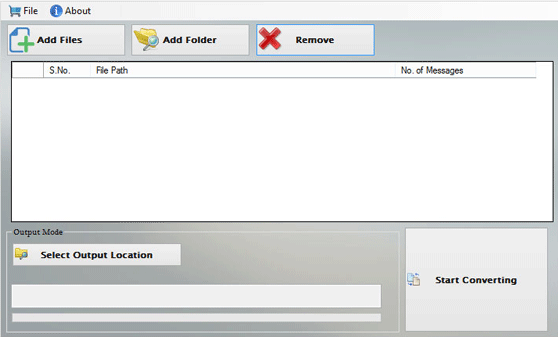Emails are an integral part of our professional lives, and we rely heavily on email clients like Microsoft Outlook to manage our emails. Microsoft Outlook stores all its data, including emails, contacts, and calendars, in a PST file. However, there are situations where you may need to convert your PST file from ANSI to Unicode format. In this blog, we will discuss the reasons behind the conversion and the steps to convert an ANSI PST file to a Unicode PST file.
DOWNLOAD NOW
What is the difference between ANSI and Unicode PST files?
The PST file format has two variations – ANSI and Unicode. The ANSI PST file format has been around for a long time, and it was the default format for Outlook 2002 and earlier versions. The maximum size of an ANSI PST file is limited to 2 GB, which can cause issues if you have a large number of emails or attachments.
Unicode PST files, on the other hand, were introduced with Outlook 2003, and they offer several advantages over their ANSI counterparts. The maximum size of a Unicode PST file is 20 GB, which means you can store a lot more emails and attachments. Additionally, Unicode PST files support multilingual data, which makes it easier to store and manage emails in languages other than English.
Manual Steps to convert ANSI PST files to Unicode PST file
- Open Outlook and click on File > Open & Export > Import/Export.
- In the Import and Export Wizard, select “Export to a file” and click Next.
- Select “Outlook Data File (.pst)” and click Next.
- Select the ANSI PST file that you want to convert and click Next.
- Choose the location where you want to save the Unicode PST file and select “Replace duplicates with items exported” if you want to replace the existing file. Click Finish.
Now that you know why you need to convert your ANSI PST file to a Unicode PST file.
- In the “Create Outlook Data File” dialog box, select “Unicode format” and click OK.
- If your ANSI PST file is password-protected, you will be prompted to enter the password. Enter the password and click OK.
- The conversion process will start, and it may take some time depending on the size of your PST file. Once the process is complete, you will have a Unicode PST file that you can use with Outlook.
Method 2: Professional Method Transfer Outdated PST files to New Unicode PST files:
The OSTTOPSTAPP ANSI to Unicode Converter Tool can convert old ANSI PST files to new Unicode PST files. Users can securely, exactly, and without data defeat Transfer ANSI PST files to Unicode PST files. The ANSI and Unicode data files in these Outlook PST files are both infinite in size. Users can create Unicode PST files of any size. Among its many features are tasks, calendars, attachments, emails, notes, messages, and contests. Every version of the Windows operating system, including versions 11, 8.1, 8, 7, Vista, and XP, is compatible.
Look at the steps involved in the conversion process:
- Fast download and install the converter tool on your Windows
- Run the application” and “select ANSI files by browse” in File or Folder Mode
- Browse to choose the “output location”
- Hit the tab “Start Convert”
What are the benefits of using Unicode PST files?
Several benefits of their ANSI conversion:
Increased Storage Capacity:
Unicode PST files support a maximum file size of 20 GB, which is much larger than the maximum file size of 2 GB supported by ANSI PST files. This increased storage capacity allows you to store more data in a single file, reducing the need for multiple PST files.
Support for Multilingual Data:
Unicode PST files support a wide range of languages, including complex scripts such as Arabic, Chinese, and Hebrew. This means that you can store and manage emails and other data in different languages within a single PST file.
Improved Performance:
Unicode PST files offer improved performance over ANSI PST files, especially when working with large files or searching for specific items. This is because Unicode PST files use a more efficient storage format that allows for faster data access and retrieval.
Compatibility with Latest Versions of Outlook:
Unicode PST files are compatible with the latest versions of Outlook, including Outlook 2019 and Outlook 365. This means that you can access your data on different devices and platforms, including mobile devices and webmail clients.
Future-Proofing:
As Unicode PST files are designed to support a wide range of languages and larger file sizes, they are more future-proof than ANSI PST files. This means that you can continue to use your PST files for many years without needing to worry about compatibility issues or limitations.
Conclusion
Converting your ANSI PST file to a Unicode PST file is a simple process. That can save you a lot of trouble in the long run. By converting to a Unicode PST file. You can avoid data loss due to corruption and manage your emails more efficiently. The steps outlined in this blog should help you convert your PST file without any issues.
